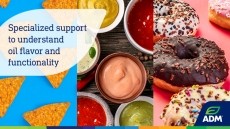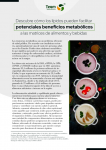Trans fat leads to weight gain even on equal calories - in monkeys at least
compared to a diet rich in monounsaturated fats, even when the
calorie intake is equal, says a monkey study.
"What is says is that trans fat is worse than anticipated," said Professor Lawrence Rudel from the Lipid Sciences Research Program at Wake Forest University School of Medicine.
Abdominal obesity, also known as the 'apple' body shape, has been reported to be a major risk factor for diabetes and cardiovascular disease. The new research, presented their results at last week's annual sessions of the American Diabetes Association in Washington DC, indicates that trans fatty acid intake may increase weight gain around the abdomin.
Over six years male monkeys were fed a western-style diet formulated to provide eight percent of the calories from either trans fatty acids or monounsaturated fatty acids (MUFA) from olive oil. People who eat a lot of fried food, say the researchers, may have trans fatty acid intakes of about eight percent.
The amount of calories fed to the monkeys on both diets was equal and should have been adequate only to maintain weight and not increase it.
But the results showed that the trans fatty acid-rich diet led to a 7.2 percent increase in body weight, while the MUFA diet led to an average weight gain of 1.8 percent.
And when the researchers used a computed tomography (CT) scan to investigate where in the body the extra weight was being gained, they found that the trans fat diet was leading to weight gain around the abdomin.
"We measured the volume of fat using CT," said co-researcher Kylie Kavanagh. "They deposited 30 percent more fat in their abdomen."
Professor Rudel admitted his surprise at the results. "We believed they couldn't get obese because we did not give them enough calories to get fat."
"We conclude that in equivalent diets, trans fatty acid consumption increases weight gain," said Kavanagh. "In the world of diabetes, everybody knows that just 5 percent weight loss makes enormous difference. This little difference was biologically quite significant."
Though trace amounts of trans fats are found naturally, in dairy and meats, the vast majority is formed during the partial hydrogenation of vegetable oil that converts the oil into semi-solids for a variety of food applications.
Trans-fatty acids are attractive for the food industry due to their extended shelf life and flavor stability, and have displaced natural solid fats and liquid oils in many areas of food processing.
Numerous studies in the literature show that trans fatty acids raise serum levels of LDL-cholesterol, reduce levels of HDL-cholesterol, can promote inflammation, can cause endothelial dysfunction, and influence other risk factors for cardiovascular diseases (CVD).
Since the start of 2006, the FDA has stated that the amount of trans fat is required to be listed in the nutrition facts panel on all foods - but not for the restaurant industry.












